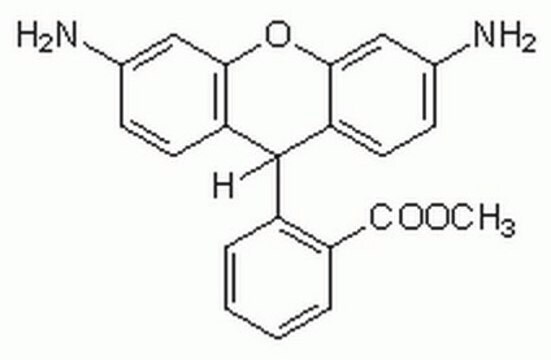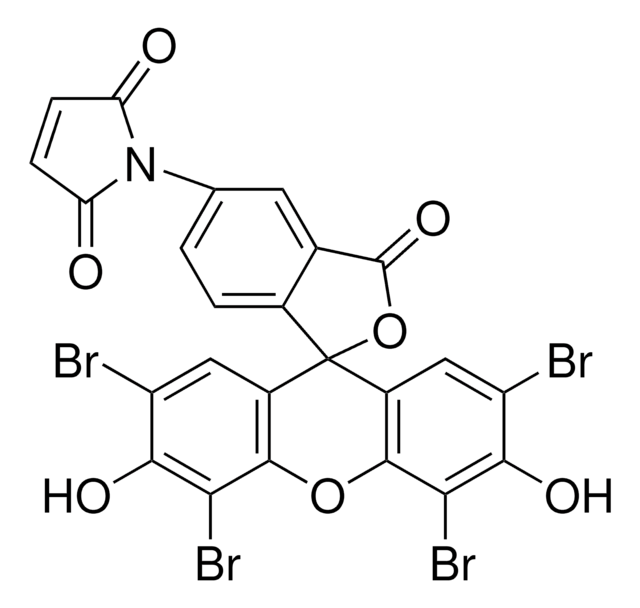D1054
Dihydrorhodamine 123
≥95% purity, powder
Sinonimo/i:
DHR 123; Methyl 2-(3,6-diamino-9H-xanthen-9-yl)benzoate; Benzoic acid, 2-(3,6-diamino-9H-xanthen-9-yl)-, methyl ester
About This Item
Prodotti consigliati
Nome del prodotto
Dihydrorhodamine 123, ≥95%
Livello qualitativo
Saggio
≥95%
Stato
powder
tecniche
titration: suitable
Colore
pink
Solubilità
DMSO: >5 mg/mL
applicazioni
diagnostic assay manufacturing
hematology
histology
Temperatura di conservazione
−20°C
Stringa SMILE
COC(=O)c1ccccc1C2c3ccc(N)cc3Oc4cc(N)ccc24
InChI
1S/C21H18N2O3/c1-25-21(24)15-5-3-2-4-14(15)20-16-8-6-12(22)10-18(16)26-19-11-13(23)7-9-17(19)20/h2-11,20H,22-23H2,1H3
FNEZBBILNYNQGC-UHFFFAOYSA-N
Cerchi prodotti simili? Visita Guida al confronto tra prodotti
Descrizione generale
Applicazioni
Azioni biochim/fisiol
Substrati
Codice della classe di stoccaggio
11 - Combustible Solids
Classe di pericolosità dell'acqua (WGK)
WGK 3
Punto d’infiammabilità (°F)
Not applicable
Punto d’infiammabilità (°C)
Not applicable
Dispositivi di protezione individuale
Eyeshields, Gloves, type N95 (US)
Scegli una delle versioni più recenti:
Possiedi già questo prodotto?
I documenti relativi ai prodotti acquistati recentemente sono disponibili nell’Archivio dei documenti.
I clienti hanno visto anche
Articoli
Oxidative stress is mediated, in part, by reactive oxygen species produced by multiple cellular processes and controlled by cellular antioxidant mechanisms such as enzymatic scavengers or antioxidant modulators. Free radicals, such as reactive oxygen species, cause cellular damage via cellular.
Il team dei nostri ricercatori vanta grande esperienza in tutte le aree della ricerca quali Life Science, scienza dei materiali, sintesi chimica, cromatografia, discipline analitiche, ecc..
Contatta l'Assistenza Tecnica.










